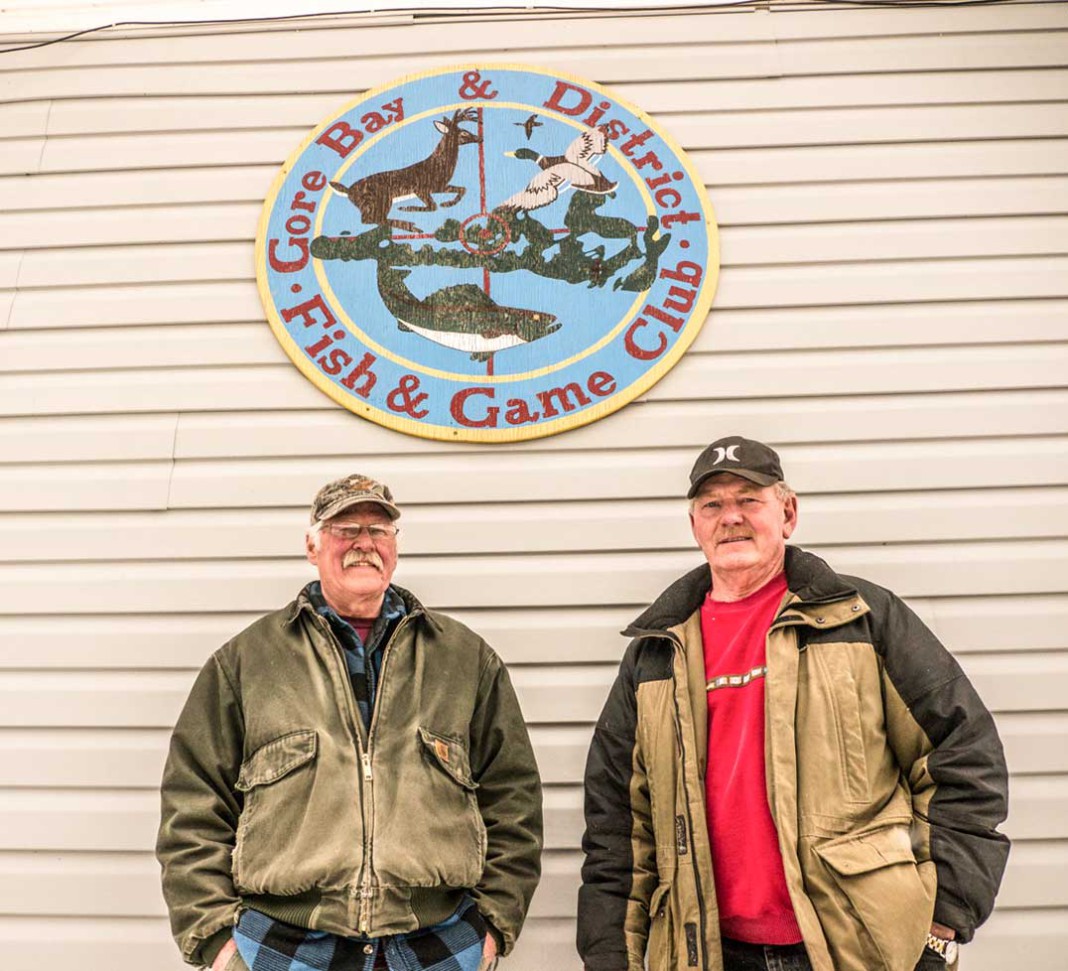by Isobel Harry
GORE BAY—The Gore Bay Fish Hatchery started up in 1986, owned and operated as a project of the Gore Bay Fish and Game Club. Then, as now, the mission of the non-profit organization of volunteers is “to rehabilitate the sport fishery” in the waters surrounding the Island, according to Ches Witty, the Hatchery’s volunteer manager, specifically the Chinook salmon stocks.
Mr. Witty and Chris Robinson, president of the Gore Bay Fish Hatchery for the last seven years, met this writer in Mr. Robinson’s main street shop in Gore Bay. Robinson’s Auto Supply (and courier depot), is one of those old-fashioned places with well-worn wooden floors, high ceilings and a long counter for ordering or just chatting with Mr Robinson and his wife, Joyce, who organizes the dinners and barbecues for the club’s fundraising events.
The Fish Hatchery, located on the waterfront near the marina, has 59 members who attend meetings on the first Wednesday of the month from September to June. Mr Robinson and Mr Witty do most of the work related to the maintenance of the hatchery, with two other club volunteers, Barry Wall and Ronald Snell. Twice a week they clean out the facility, the four 500-gallon tanks, pipes and filters that keep about 100,000 Chinook salmon growing from egg stage to release.
“Our success rate is 65 to 75 percent survival rate or higher,” says Ches Witty. “In the wild it’s only 10 percent.” The eggs are gathered from Kagawong River salmon in October by milking the live fish for eggs and sperm; these are mixed together with a fertilizing agent and put into Heath trays, or incubators, back at the hatchery. The eggs take about seven weeks to hatch, living off their own egg sac which disappears after 15 weeks in the trays. Then it’s into the heated tanks with automated feeders for the hatchlings to grow into the 2 ½ to 3-inch fish that will be released each year starting April 1. They live on average four years before returning to the places they were released, to spawn.
“We planted 30,000 fish in Gore Bay on April 1,” says Chris Robinson. “Released another 20,000 in Kagawong on April 11, and 20,000 more go into Meldrum Bay. The salmon have a better chance at survival then because they’re released bigger, before their predators arrive.
“We’re the only ones contributing to Chinook salmon rehabilitation on the Island, no-one else is doing it. Without the private donations, the generous support of local and surrounding businesses for our Kids’ Derby in March and other fundraisers, the backing of the Ontario Federation of Anglers and Hunters (OFAH, of which the Gore Bay Fish and Game Club is a member) and the volunteer participation of our members, nothing would happen.” OFAH works in partnership with the Ontario Ministry of Natural Resources and Forestry (MNRF).
The dedicated men are only too happy to make things happen and they are proud of the spotless, insulated facility with temperature and oxygen level controls, a re-circulating water system and UV lights. “We’ve got 15 to 18 percent of our former space and we’re raising as many fish as we did at the old hatchery,” points out a voice from the dim, compact room. The club secured a 25-year lease for the old pumphouse from the Town of Gore Bay for $1, and the town does the bookkeeping, issuing tax receipts for donations.
“The fishery’s coming back,” enthuses Ches Witty. “Last fall we had the most fish than anyone had ever seen, it was the biggest run; both size and number were noticeably larger when we gathered the eggs in the fall. It’s gratifying to feel like you’re making a difference.”
For information on the Gore Bay Fish Hatchery, or to join the club, contact Chris Robinson at 705-282-2090. Annual membership is $55 single and $65 for a family. Automatic membership in OFAH for club members garners benefits such as $3 million dollar liability insurance for hunting and fishing activities.




